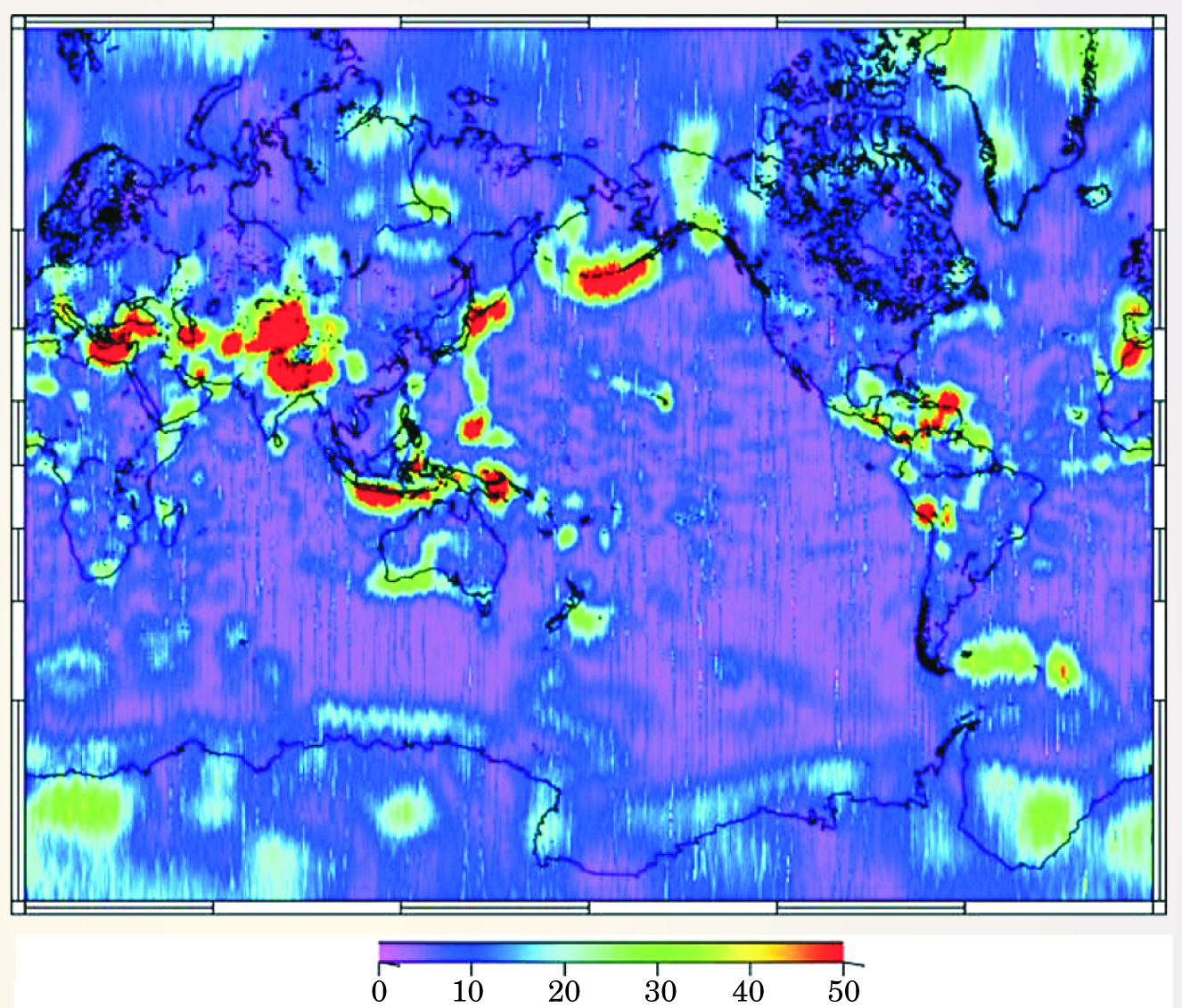GRACE Satellites Start to Map Earth’s Gravity Field
DOI: 10.1063/1.1564334
Earth is by no means a perfectly smooth sphere, but a rather bumpy, oblate ball of mass. The nonuniform mass distribution gives rise to variations in Earth’s gravitational pull. Although these variations have been measured over many years, the data have come from diverse sources having uneven quality and incomplete geographical coverage. Today’s geophysicists want to know more accurately not only what the gravity field is at each point on Earth, but how it is changing with time. Such changes may reflect, for example, charge and depletion of continental aquifers, melting of land-based glaciers, or changes in ocean currents.
The Gravity Recovery and Climate Experiment (GRACE) is designed to track those changes over its 5-year lifetime. Richard Peltier of the University of Toronto calls GRACE “the most important satellite experiment in geophysics in the past two decades.” Launched last March, the two GRACE satellites are completing the commissioning phase. Already, says the principal investigator, Byron Tapley of the University of Texas at Austin, the satellites are yielding gravitational information that’s more than an order of magnitude better than what has been accumulated over the past 30 years. Mission scientists are working to gain another order of magnitude in accuracy to reach the design goals. They released their first image, seen at right, at the December meeting of the American Geophysical Union, held in San Francisco.
GRACE is a joint partnership between NASA and the German Aerospace Center (DLR). Scientists from dozens of participating institutions in the US and Europe are involved in the project. Christoph Reigber of the Geosciences Research Center (GFZ) in Potsdam, Germany, is the coprincipal investigator.
The picture shows how the distance between the twin GRACE satellites varies as the pair fly over the globe. The microwave-ranging instrument that monitors the satellite-satellite separation can detect changes as small as 1 micron (the mean separation is several hundred km). Such changes reflect the difference in the gravitational pull felt by the two satellites. As the first satellite approaches a mountain range, for example, it is pulled farther ahead of its companion; when the two satellites straddle a mountain, they move closer together.
Accelerometers aboard each satellite help sort out the effects of nongravitational forces, and the Global Positioning System tracks the position of the GRACE spacecraft above Earth. The GRACE satellites are in a nearly polar orbit at altitudes between 300 and 500 km; their obits are designed to cover Earth’s surface once every 30 days. The picture shown here represents 200 days of data.
Earth’s gravity signal is dominated by its oblateness, which causes a separation change in the GRACE spacecraft of about 1 km once per orbit. Such low-frequency variations have been removed from the data shown above to highlight the smaller, more local features. “The results look reasonable,” observes John Wahr, a GRACE team member from the University of Colorado at Boulder. “You don’t see much gravitational variation in the oceans, but you do see lots in areas like the Aleutians and Himalayas, where tectonic plates are colliding.”
From the raw data one can generate a surface of constant gravitational potential, called the geoid, that most closely approximates the surface of the oceans. This mean surface, says Tapley, is of primary importance to oceanographers, who are using satellite altimetry data to study ocean currents. Monthly data from GRACE, he notes, will allow a much more comprehensive study of processes that cause temporal variations in the gravity field. At its design accuracy, the GRACE mission should be able to monitor the movement of a mass of water that would occupy a disk on Earth’s surface that’s just 1 cm thick and 200–300 km in radius.
Hydrologists are hoping that data from GRACE will lend insight into the exchanges of water among atmosphere, land, and oceans and help them understand changes in aquifers. Other scientists anticipate that GRACE data will help distinguish whether the sea level rise is due primarily to thermal expansion of oceans or to the melting of ice sheets. Still others expect to glean information about the speed and direction of ocean circulations, such as the “conveyor belt” that distributes heat around the globe.
Key technologies aboard the GRACE spacecraft are descended from versions first flown by the CHAMP satellite, which has been orbiting since July 2000. Managed for DLR by GFZ and led by Reigber, CHAMP has measured both the magnetic and the gravitational fields. Thanks to the experience gained by CHAMP, GRACE will make gravity-field measurements that are two to three orders of magnitude better.
In 2006, the European Space Agency will launch another satellite to measure Earth’s mass distribution: the Gravity Field and Steady-State Ocean Circulation Explorer (GOCE). Whereas GRACE will give high resolution for large-scale features, GOCE will provide high-resolution measurements of smaller-scale features. GOCE’s goal is to measure the height of the geoid with 1-cm resolution at a spatial resolution of 100 km. The three pairs of accelerometers aboard the single GOCE satellite will measure simultaneously the gravity gradients in three different directions.
GOCE will fly in a low Earth orbit, where the drag will cut its flight time to less than two years and limit its ability to sense temporal changes. Its main role will be to provide highly accurate measurements of the static field. Barbara Goss Levi

MAGNITUDE OF CHANGE IN SATELLITE–SATELLITE SEPARATION (µm)





